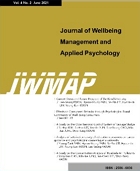- Log In/Sign Up
- E-ISSN2586-6036
- KCI
 E-ISSN : 2586-6036
E-ISSN : 2586-6036
Abstract
Purpose: The purpose of this study is to observe the immediate effects of elastic taping and isometric exercises on balance ability in the elderly. Research design, data and methodology: 15 elderlies were participated in this study and randomly assigned into two group. The intervention group was applied elastic taping on ankle joint while the control group performed isometric ankle exercise in three sets for 30 seconds per set. Anterior-posterior and medial-lateral postural sway speed were measured after the experiment. To compare the change in balance ability between groups after the experiment, independent t-test was used. To investigate the change in balance ability between pre- and post-experiment within the groups, paired t-test was used. Results: A significant difference in medial-lateral postural sway speed was found after elastic taping application only in the intervention group (p>0.05). However, there was no significant difference between the groups. Conclusions: In conclusion, this finding supported that elastic taping would be helpful to support ankle stability and increase balance ability for the elderly as well as performance for sports athlete that was demonstrated in previous studies. Further studies will be necessary to confirm the long-term effects of elastic taping application on motor control and the risk of falling.
- keywords
- Balance, Elastic Taping, Exercise, Motor control, Stability
- Downloaded
- Viewed
- 0KCI Citations
- 0WOS Citations













